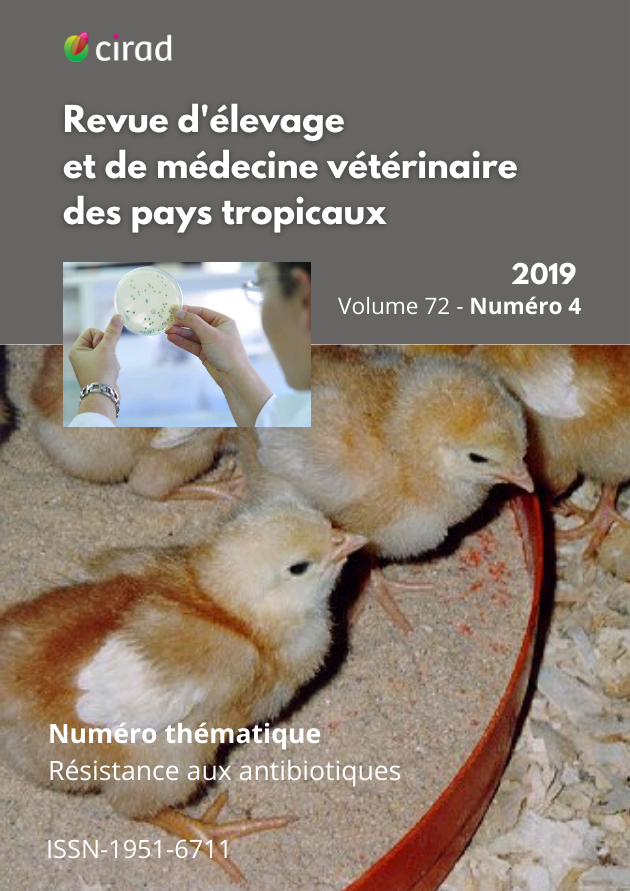Antimicrobial use and detection of cefotaxime-resistant Enterobacteriaceae in the pig production chain, Ogun State, Nigeria
DOI:
https://doi.org/10.19182/remvt.31911Keywords
Swine, Escherichia coli, Klebsiella pneumoniae, Enterobacteriaceae, antimicrobial resistance, cefotaxime, NigeriaAbstract
Cefotaxime belongs to the third-generation cephalosporin group of antimicrobials, which are classified as critical for the treatment of infections in humans. The upsurge in the incidence of cefotaxime-resistant (C-R) bacteria from animal sources is of global public health importance. This study investigated the pres- ence of C-R Enterobacteriaceae in the pig production chain in Ogun State, Nigeria, and examined C-R isolates for production of extended-spectrum b-lactamase (ESBL). The knowledge, attitude and practices of pig farmers regarding antimicrobial usage were also investigated. C-R bacteria were detected in 54 (17.8%) out of 303 samples. C-R isolates were identified as Escherichia coli (n = 22), Klebsiella spp. (n = 17), Enterobacter aerogenes (n = 10) and Citrobacter freundii (n = 5). The organisms were present in feces from on-farm pigs (15/109; 13.7%), fresh pork at slaughterhouses (19/40; 47.5%), frozen pork at retail shops (7/28; 25.0%), cutting surfaces of butchers’ tools (7/52; 13.5%), and abattoir effluent water (6/41; 14.6%). No C-R bacteria were detected in ready-to-eat pork. Three isolates of Es. coli and one of K. pneumoniae were ESBL-producers and pos- sessed blaCTX-M-15 ESBL gene variant. ESBL-producing Es. coli belonged to phylo- genetic group A. All C-R isolates were resistant to more than three antimicrobials from different classes of antimicrobials. Tetracycline, ampicillin, amoxicillin, ciprofloxacin and enrofloxacin were among the commonly used antimicrobials in pig production, whereas cephalosporins were rarely used. Farmers knew that pigs could serve as reservoirs of pathogenic bacteria transmissible to humans. However, they were not aware that the use of antimicrobials in pig production could lead to the development and proliferation of antimicrobial-resistant bacteria in pigs. Efforts should be made to improve awareness among farmers on the roles of antimicrobial use in the emergence and dissemination of antimicrobial-resistant bacteria in animal production.
Downloads
Downloads
-
Abstract1224
-
PDF258
Published
How to Cite
Issue
Section
Categories
License
© O.E.Ojo et al., hosted by CIRAD 2020

This work is licensed under a Creative Commons Attribution 4.0 International License.








